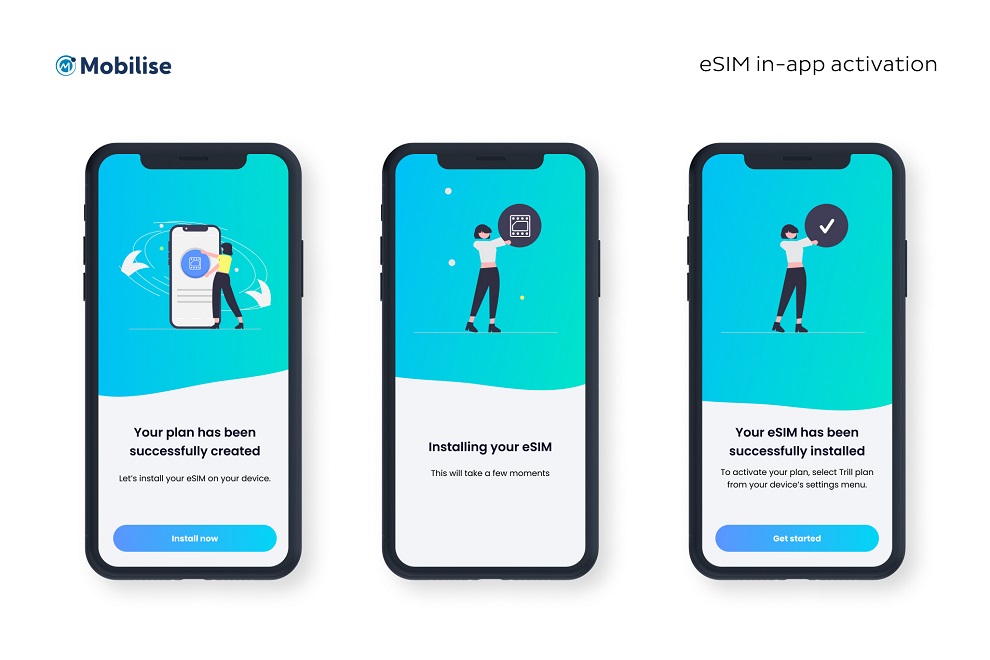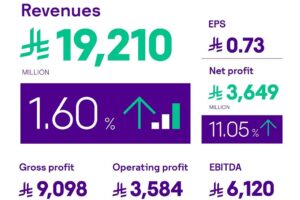The future of data roaming
Travelling has become an integral part of our lives, whether it’s for business or leisure. And for many travellers, staying connected while abroad is a top priority. But with the rising costs of data roaming and the inconvenience of swapping out physical SIM cards, there has been a growing demand for a more flexible and convenient solution. Here, Hamish White, CEO of eSIM as a Service provider Mobilise, explores the future of data roaming.
eSIM, short for embedded SIM, is a digital SIM card that is downloaded directly to a mobile device, eliminating the need for a physical SIM card. The technology has gained traction in recent years since its introduction for the consumer market in 2016, with 98 per cent of mobile operators globally planning to offer eSIM by 2025, according to GSMA Intelligence. It’s now a gamechanger for those on the go, thanks to the flexibility that it offers its users.

Changing the game
Step off the plane and, if you’re well prepared, you can be instantly connected to a local mobile network through eSIM. When activating an eSIM, all that’s required is that you have an eSIM-capable device. Research a local mobile service provider (SP) that offers eSIM technology, install their application and purchase your plan. While some will email over a QR code to scan in order to activate the device, the slicker SPs will offer in-app provisioning, to get you connected in just one tap.
The key benefits when it comes to travel is how easy it is to switch between SIMs, with devices able to hold as many as eight eSIMs simultaneously without the trouble of physically carrying and changing SIM cards, and the cost savings. It’s often far more cost effective to use a traveller eSIM than a data roaming package from your home country SP This means that travellers can have a local number and data plan in the country they’re visiting, while still keeping their usual number active. While it’s considerably more convenient for those travelling for leisure purposes, it’s even more helpful for regular business travellers who often need to maintain local contacts while staying connected with their base.
Overcoming roadblocks
While eSIM for travel has been a nicety for a few years now, it’s a necessity for US iPhone 14 owners as the device is only compatible with eSIM, with no physical SIM card slot at all. With early predictions that the iPhone 15 will too be eSIM-only, but this time in Europe too, there are some concerns among consumers around the device’s capabilities for travel.
Travel to less developed nations, and the chances of finding a mobile SP that offers eSIM are fairly slim. But US iPhone 14 owners don’t have to use their local US SIM and pay extortionate roaming charges. Using an eSIM-capable device means travelers can purchase a local eSIM or make use of a roaming traveler eSIM. This market has been developing at a rapid pace over the last couple of years. These SPs offer an alternative to buying locally or paying roaming charges.
Mobilise’s HERO platform, a white-labelled, fully customisable BSS platform that enables network operators to launch their digital eSIM capabilities enables SPs to do exactly this. HERO provides all the digital services required for an SP to launch eSIM capabilities — from the consumer digital interface to app and website development and designing the user experience. Mobilise’s Trill Mobile is a fully operational demo of how HERO would look for an SP, and how it makes it possible to offer super-fast, hassle-free data in just one tap, with in-app eSIM authentication.

Untapped potential
While eSIM creates a whole new level of customer experience for mobile SPs, it also opens up the market to non-telco businesses to offer eSIM connectivity as an additional revenue stream.
Any business that operates digitally and has its own app can potentially offer eSIM services through Mobilise’s plug-and-play eSIM SDK. Fully integrable into existing mobile applications, eSIM SDK enables businesses to offer mobile data directly through their own app in a matter of days.
Take the example of airlines. Glance around an aircraft cabin the moment the plane touches down and you’ll see everybody switching their phones back on and getting connected to the local mobile network. Airlines could offer eSIMs through their mobile application at the point when customers are purchasing flights as well as during online check-in, which would not only enhance the customer experience and offer an additional, often-forgotten necessity, but would also diversify their revenue stream.
Thanks to the development of the consumer eSIM, connectivity issues when travelling can, and will, become a distant memory. Whether you’re a frequent traveler, a mobile SP or a business owner in the travel industry looking to diversify your service offering, it’s time to embrace the power of eSIM and the changes it’s bringing to global connectivity for the better.












